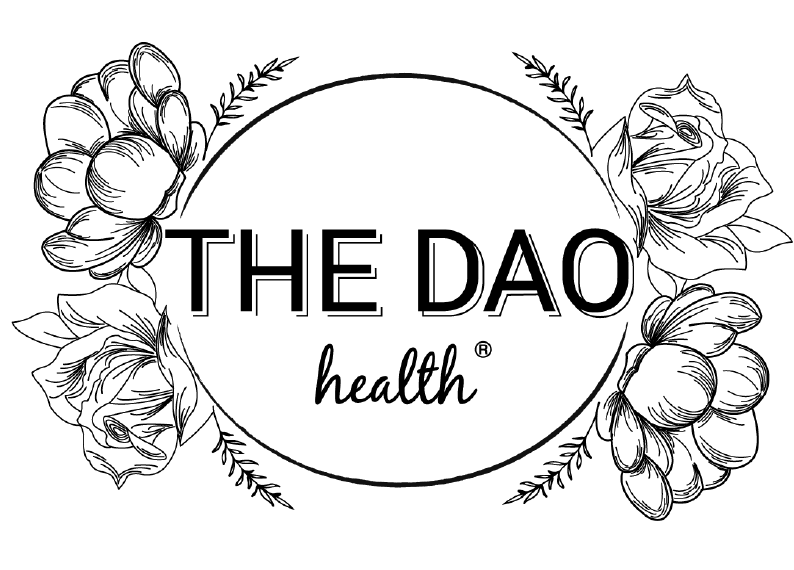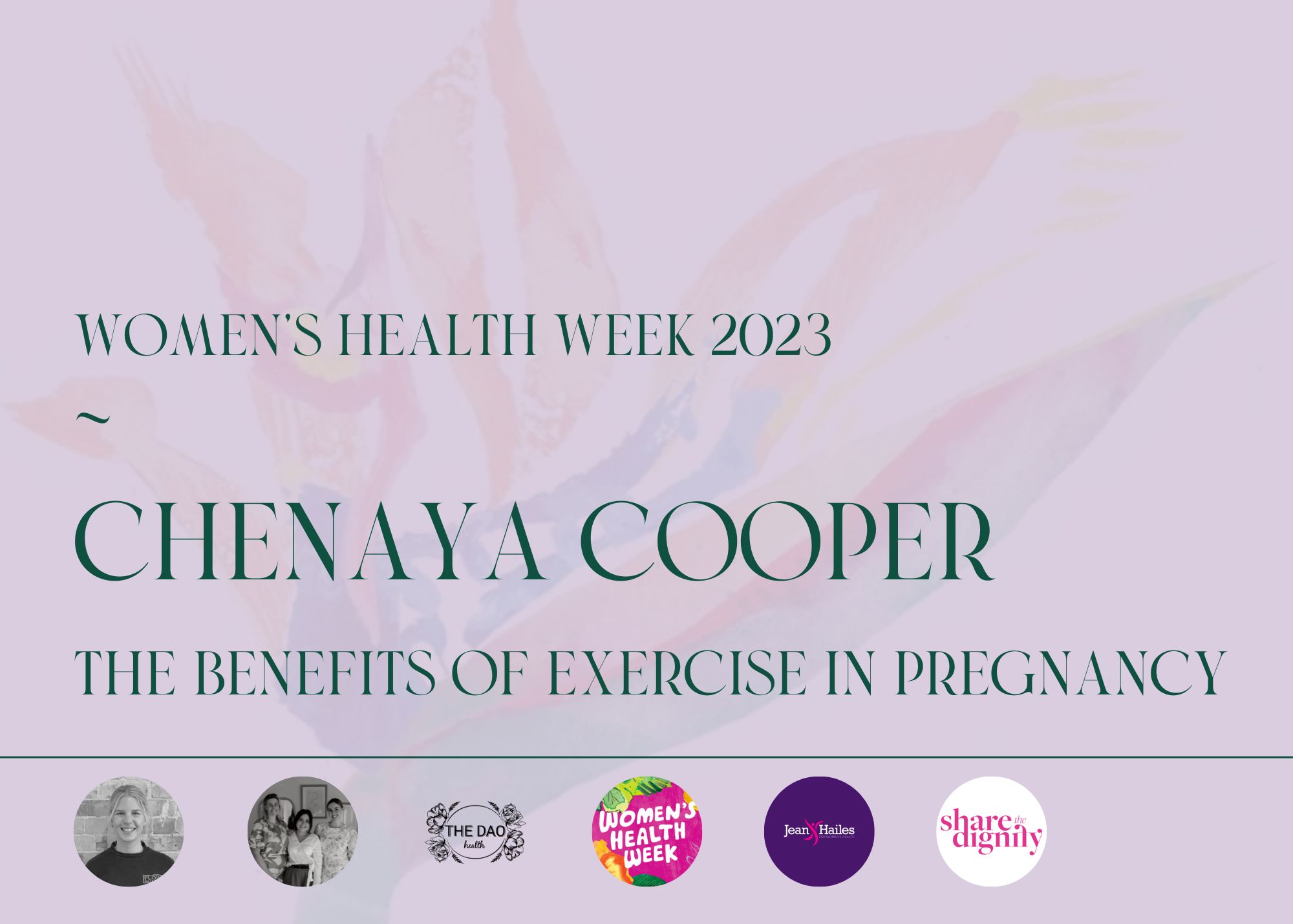The Dao Does X Jean Hailes Women’s Health Week 2023 Journal Series ~
How Exercise Can Benefit Your Pregnancy with Exercise Physiologist Chenaya Cooper ~
Acupuncture provides a low-risk intervention for common signs and symptoms in pregnancy in all trimesters and in the postpartum period. At The Dao Health Acupuncture is recommended in pregnancy through all four trimesters. In Trimester One Acupuncture is recommended to reduce morning sickness, decrease fatigue and support mental health. In Trimester Two and Three Acupuncture plays a beneficial role in managing musculoskeletal pain such as Sciatica, Pubic Pain and Carpel Tunnel Syndrome. Acupuncture also supports the reduction in reflux, insomnia and fluid retention. Labour Preparation Acupuncture in the final weeks of pregnancy is well-researched to prepare women for childbirth and for the most efficient birth possible by ripening the cervix and supporting the optimal position of the baby. In addition to the series of Labour Preparation treatments is learning how to apply Acupressure throughout labour to support labour efficiency and pain relief. For postpartum support, the first forty days – otherwise known as the golden month is a time in Traditional Chinese Medicine that is critical to support the Mother post birth, to nourish blood, support milk supply and birth recovery.
It is important to note that Acupuncture in pregnancy should be practiced by an AHPRA-registered Acupuncturist and Traditional Chinese Medicine practitioner who is trained in Women’s Health and Pregnancy.
When treating patients throughout their pregnancies at The Dao Health we often support women in an integrative healthcare model from preconception care through pregnancy, birth preparation and postpartum to support a healthy pregnancy, optimal birth outcomes and postpartum recovery. A beneficial member of this healthcare model is an Exercise Physiologist who supports women and their pelvic floor to prepare their body for pregnancy, encourages supportive movement throughout pregnancy, prepares for birth and aids postpartum recovery. We often work with Chenaya Cooper and the Flow Physio Co team to support our patients in preparing for pregnancy, for support throughout their pregnancies, to prepare for birth and for reintroduction to movement postpartum.
~
Women’s Health Accredited Exercise Physiologist, Chenaya Cooper ~
Chenaya is a strong advocate for women in prioritising their health in all aspects of life! She is passionate about ensuring a holistic approach to health, and enabling women to take control over their own health with confidence!
Chenaya works with women through all aspects of their lives and has a special interest in Pregnancy, Post-Natal return to exercise, Endometriosis and Adenomyosis, PCOS, IVF support, Pelvic Floor Dysfunction and Menopause.
~
1. What does Women’s Health mean to you?
Women are amazing, everchanging and unique, and require specialised attention to their health through all phases of life. Throughout a Woman’s lifespan, she undergoes significant hormonal, mental and physical changes, all of which shape her into a spectacular Woman!
To me, Women’s Health starts from the moment she is born to her final days, encompassing everything in between! I believe in a holistic approach to health, addressing all aspects of a Woman’s health and encouraging an in-depth understanding of her everchanging body inside and out! Autonomy of her own own health will enable a Woman to understand the cyclic nature of her body throughout her life, and give her confidence to achieve the best version of herself!
I place great importance on Women’s Health from all aspects to bring together research and treatment modalities to ensure the best possible outcomes for whatever stage of life a Woman is in! If I can assist one Woman in understanding and improving her health, I believe this will have a magnitude effect on Women all over the world!
2. How can exercise benefit pregnancy?
Exercise is not only safe but imperative during pregnancy not only for the health of the mother and baby during the gestational period but also for the duration of their lives.
Research shows the importance of exercise during pregnancy in:
- Preventing and managing Gestational Diabetes, Gestational Hypertension, Eclampsia and Preeclampsia
- Reducing lumbopelvic pain
- Strengthening the core and pelvic floor muscles
- Managing Urinary Incontinence
- Managing and Reducing Diastasis Recti
- Reducing the risk of excessive or inadequate fetal growth
- Reducing risk of miscarriage
- Reduce the risk of birth interventions (emergency Cesarean-Section, episiotomy, forceps and vacuum delivery)
The type of exercise is also important during pregnancy, with resistance, aerobic and mobility exercise being of upmost importance.
The current Australian guidelines for exercise during pregnancy are 2.5-5 hours of moderate intensity OR 1.5-2.5 hours of physical activity per week, in addition to a minimum of 2 days of resistance training. There are also new studies showing evidence of avoiding exercising flat on your back following trimester 1 (week 13) of pregnancy to reduce the risk of reduced blood circulation to your baby.
Seeking a Women’s Health Accredited Exercise Physiologist will ensure safe and effective exercise is prescribed specific to you and your stage of pregnancy.
3. What exercise would you recommend during Trimesters 1, 2 & 3 of Pregnancy?
During each Trimester, the mother’s body is constantly growing and changing, so adaption of exercise must be catered to your stage of pregnancy, symptoms and goals.
As a general rule, exercise sessions should be catered around reducing Diastasis Recti; also known as ‘Abdominal Separation’ or ‘DRAM’, in addition to improving upper and lower limb strength in preparation for lifting, carrying and nursing your new baby.
Trimester 1: Your Exercise Physiologist will introduce you to the ‘Core-Pelvic Floor Connection Breath’ to equip you with the correct breathing techniques to control the pressure through your abdominal wall during your pregnancy to reduce the severity of your Diastasic Recti, and also ensure optimal pelvic floor health. During this time, your goals may include improving or maintaining overall body strength and remaining active during symptoms such as fatigue, sickness and breathlessness. Your exercise volume and intensity will be monitored to ensure the health of you and your baby.
Trimester 2: These weeks generally welcome relief from nausea and fatigue, and most women experience more energy and will start to notice increases in abdominal and breast size. Your Exercise Physiologist will continue to progress your strength and fitness as developed during the First Trimester, most modifying exercises that may exacerbate Diastasic Recti whilst your baby grows. If you are experiencing any musculoskeletal discomfort during this stage of your pregnancy, there will be a focus on reducing this severity, in addition to ensuring good postural alignment and movement variability during this stage of pregnancy.
Trimester 3: During the final weeks of pregnancy, there will be special consideration and modification to your exercise regime to accommodate for changes in a Woman’s abdominal musculature, load on her pelvic floor and the increasing size of her midsection as pregnancy reaches full-term. Your Exercise Physiologist will focus on maintaining a comfortable level of activity and reducing any discomfort related to your body changes. Birth-preparation exercises including hip mobility to aid in Perineal lengthening will also be structured in your program. It is imperative that modifications are in place to ensure reduced pressure through the abdominal wall, and minimising downward pressure on the pelvic floor.
4. Can supporting one’s physical strength support labour and birth outcomes?
Focusing on overall body strength and mobility, namely through the core and pelvic floor muscles throughout your pregnancy will prepare you for an easier and reduced second stage of labour. More research is now showing the benefits of pilates-based exercise in pregnancy due to its role in developing standard breathing techniques to activate deep stabilising muscles to improve the strength of the pelvis and trunk.
Exercise also plays a major role in promoting higher success rates and live birth rates in exercising women than in sedentary women.
5. Can exercise in pregnancy support birth recovery in the postpartum period?
During both the prenatal and postnatal periods, women undergo significant physiological changes, including in their heart, muscles, lungs and hormones to name a few! During the postpartum period, the mother’s body is continuing to recover for up to 12 months post-birth! This time is increased if the mother is breastfeeding, due to the hormonal influences of relaxin and oestrogen, and the stress hormones like adrenaline and cortisol from lack of sleep.
Involvement of birthing interventions and identification of musculoskeletal conditions including Diastasic Recti, Pelvic Organ Prolapse (POP) and Stress Urinary Incontinence (SUI), are imperative to address during your postpartum exercise rehabilitation.
Exercise from weeks 0-6 should consist of regular walking, and limiting lifting to the weight of your baby, especially in the case of a Cesarean-Section. At week 6 postpartum, it is imperative to undergo an assessment for exercise clearance by your Exercise Physiologist, and this can be complimented with a pelvic floor check by your Women’s Health Physiotherapist. Following this, exercise will be catered to your current symptoms and goals moving forward, through the administration of resistance, aerobic and mobility-based exercise.
Exercise guidelines recommend 150 mins of moderate to vigorous aerobic exercise per week in addition to 2-3 days of resistance training on non-consecutive days.
If returning to running or high-intensity exercise is your goal, your Exercise Physiologist will also administer a step-wise rehabilitation program to reduce pelvic floor dysfunction prior to returning to these exercise modalities!
~
Interviewed by Elizabeth Cullen
(BHlthSc (TCM), MWomHMed)


